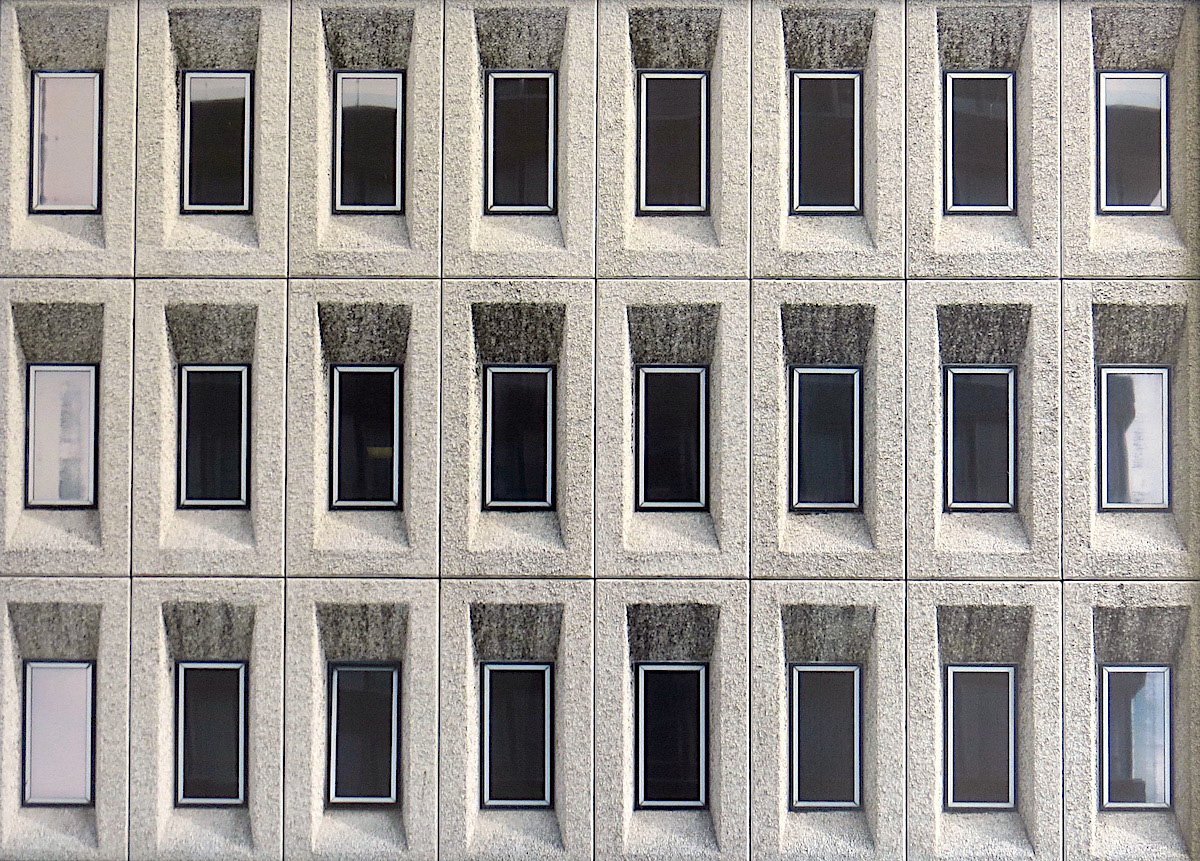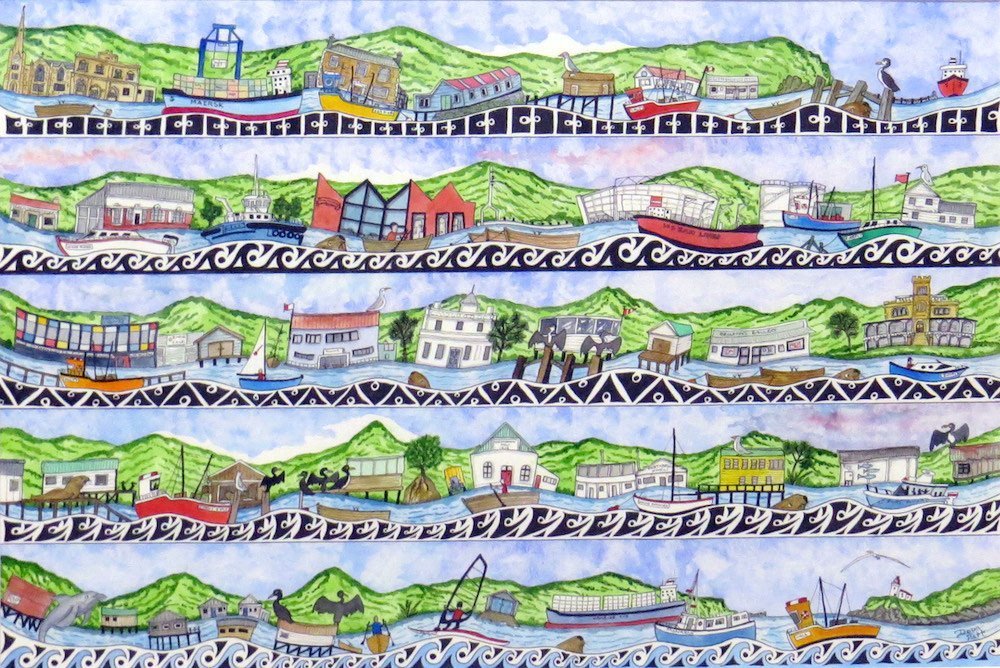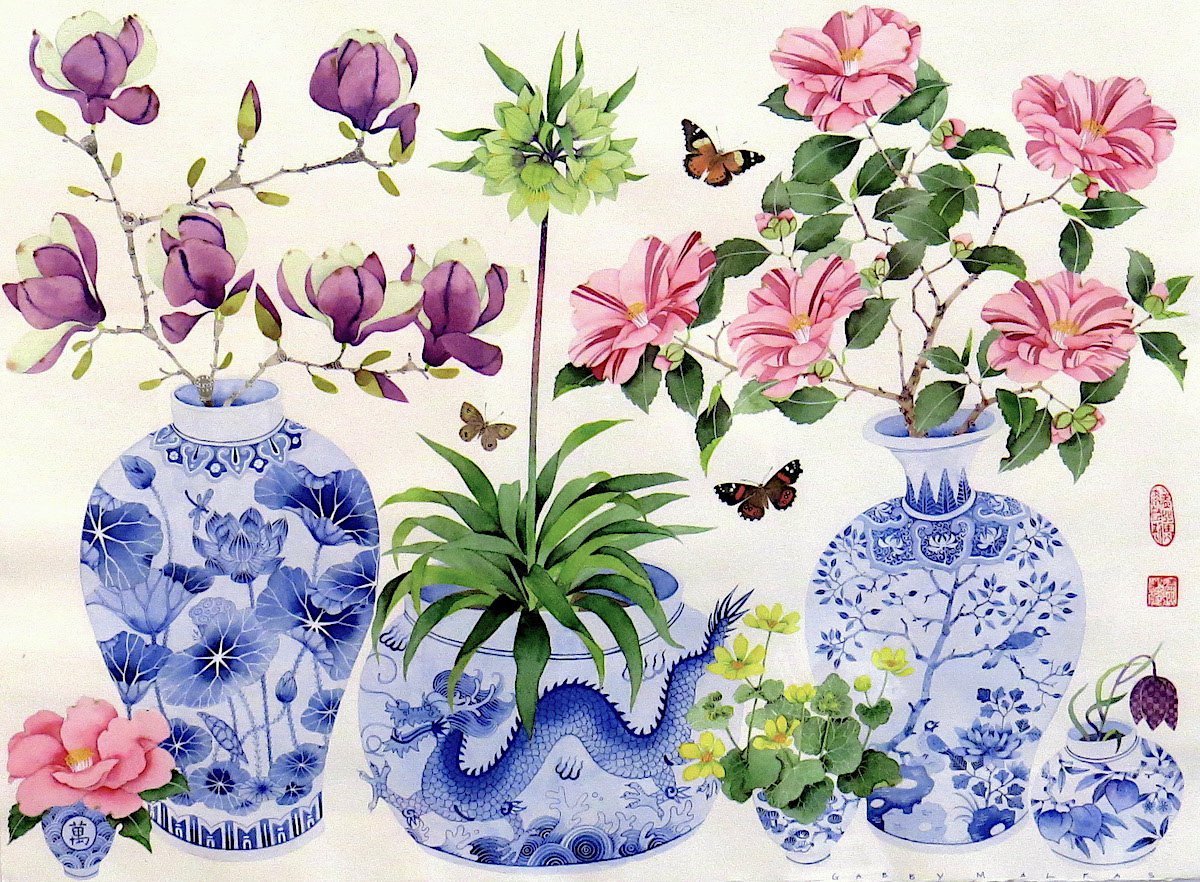BY JAMES DIGNAN

Office blocks and apartments: we pass them every day without a second thought — uniform, bland features of the modern cityscape, often with no redeeming features. Yet, in the right hands, these urban ciphers can take on an air of disquiet, where the slightest variation from the regular pattern can offer the chance of voyeuristic delight.
So it is with Murray Eskdale’s architectural shots of Dunedin, Sydney, and Hong Kong. Deprived of any sign of inhabitants, we gain a feeling of kenopsia — of somehow having strayed into a haunted, empty world. This is not a new trope in art, anymore than is the romancing of the cityscape. Artists from Di Chirico and Hopper to Siddall and Crewdson have rendered cities filled with nothing but spirits and ominous portents.
One thing which Eskdale has successfully achieved in his cropped close-ups of these brutalist structures is to emphasise how a slight break from uniformity can add intrigue. The artist revels in the mysteries which may lurk behind the placid facade. A half-open blind, a stray shadow in a window, and a light in one room of an otherwise darkened building, all allow for flights of fancy. We seek these breaks from the norm in Eskdale’s polished focus, fascinated by the possibilities which lurk behind the glass.

Details of the city skyline are also of major importance in the work of Doug Hart, but with very different effect. Hart presents a series of views of Dunedin as seen through caricatures of many of its iconic and cliched features, all presented with a glint in the eye and a whimsical humorous charm.
Whether it is the wildlife of the Otago coast, the flats of Dunedin North’s "Studentville", or the coastline of Otago Harbour, Hart has gathered as many images and symbols of his subjects as he can and presented them in their kaleidoscopic wonder, surreally placed as souvenirs on shelves or as bath toys and bathroom tiles. In his paean to university flatting, the artist has mixed actual photographs with his usual watercolour and ink media to create scenes which suddenly come to life. In his views of harbourside buildings, it is the shore which undulates like the waves of the water. Tiny details, like a penguin-shaped water faucet or the use of old band posters, make these works a delight that rewards repeated viewing.
The style of the art is, by and large, naive, but this is not to say that the art isn’t a fine, enjoyable, and nostalgic love-song to Dunedin.

Gabby Malpas’ art draws from several strands. As a former Otago Polytechnic art student, she fondly recalls time spent in Dunedin Botanic Garden and its inspiration for her art. As a woman of Chinese descent brought up by white parents, she has both European and Chinese art traditions infuse her work.
The resulting images, a virtual message of thanks to the Botanic Garden, come across as an intriguing mix of Chinoiserie and Victorian botanical scientific study, sharing both the warm pristine beauty of the blooms and also a more clinical objectivity. There is a gentle obsessiveness to many of the works, which comes across not so much in the flowers themselves but in the birds and insects which are present in several of the images. Mantises sit among the datura blooms, and a fantail and waxeye perch beneath the blossoms of The Rhododendron Dell — Remembered. Several William Morris-like border friezes focus on the repeated patterns of bloom and leaf, and Chinese vases in several works are as lovingly depicted as the plants they contain.
The exhibition is, unfortunately, slightly hindered by the way the paintings are displayed, grouped in seven panels. Although this allows for a large number of works to be displayed in a small space, the images aren’t given full opportunity to "breathe" as individual items.











